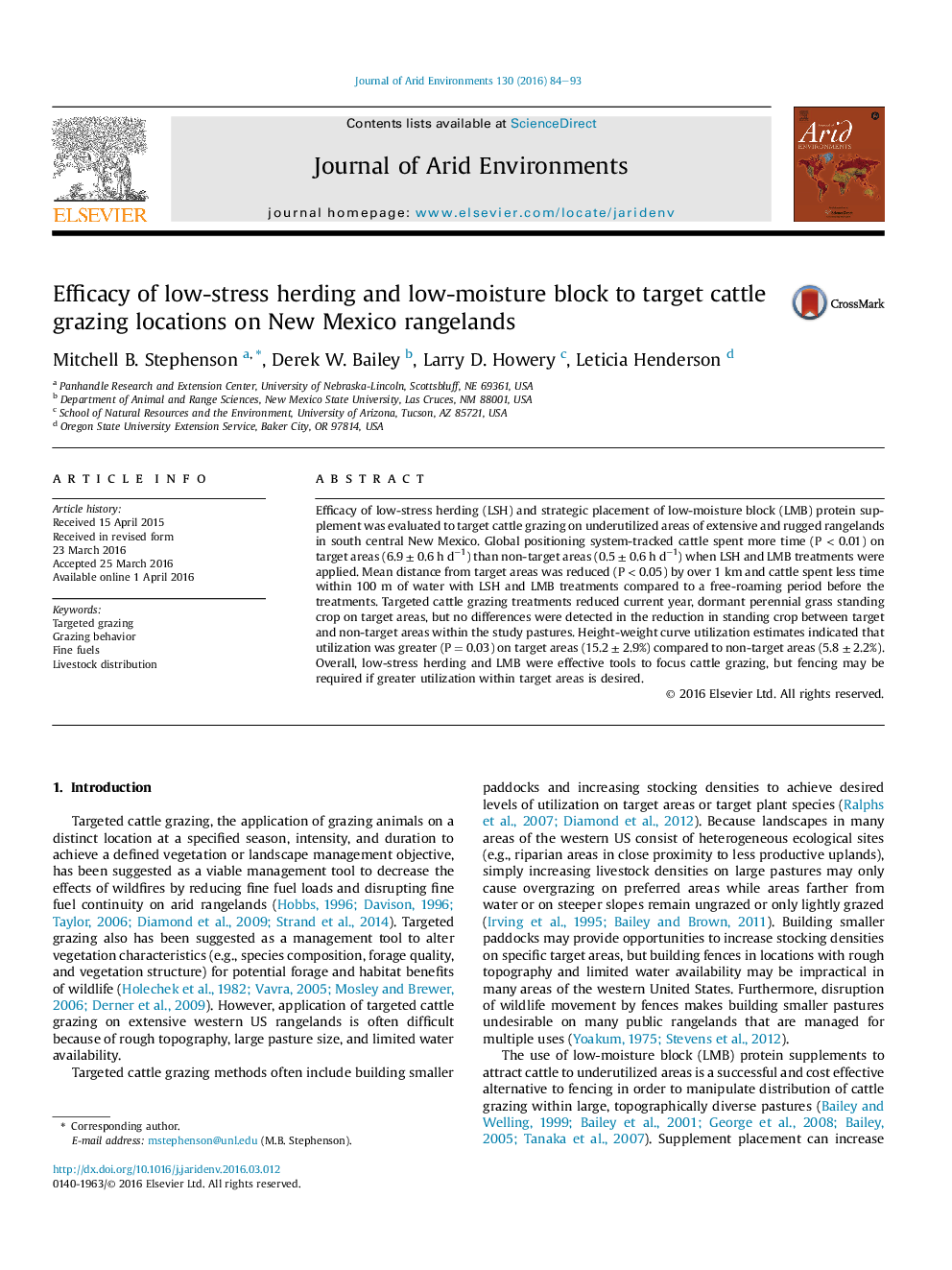| Article ID | Journal | Published Year | Pages | File Type |
|---|---|---|---|---|
| 4392694 | Journal of Arid Environments | 2016 | 10 Pages |
•Low-stress herding and low-moisture block were evaluated to target cattle grazing locations.•Cattle spent more time on target compared to non-target control areas.•Utilization of perennial grasses was greater on target compared to non-target areas.•Low-stress herding and low-moisture block were effective tools for targeting cattle grazing.
Efficacy of low-stress herding (LSH) and strategic placement of low-moisture block (LMB) protein supplement was evaluated to target cattle grazing on underutilized areas of extensive and rugged rangelands in south central New Mexico. Global positioning system-tracked cattle spent more time (P < 0.01) on target areas (6.9 ± 0.6 h d−1) than non-target areas (0.5 ± 0.6 h d−1) when LSH and LMB treatments were applied. Mean distance from target areas was reduced (P < 0.05) by over 1 km and cattle spent less time within 100 m of water with LSH and LMB treatments compared to a free-roaming period before the treatments. Targeted cattle grazing treatments reduced current year, dormant perennial grass standing crop on target areas, but no differences were detected in the reduction in standing crop between target and non-target areas within the study pastures. Height-weight curve utilization estimates indicated that utilization was greater (P = 0.03) on target areas (15.2 ± 2.9%) compared to non-target areas (5.8 ± 2.2%). Overall, low-stress herding and LMB were effective tools to focus cattle grazing, but fencing may be required if greater utilization within target areas is desired.
